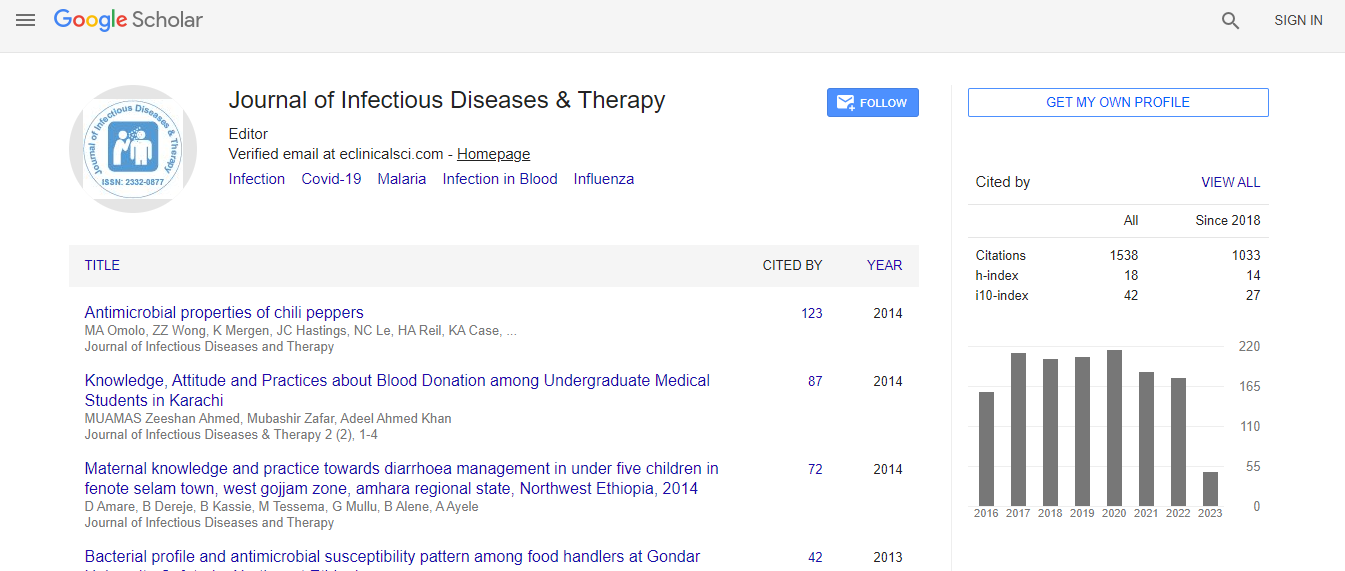Our Group organises 3000+ Global Conferenceseries Events every year across USA, Europe & Asia with support from 1000 more scientific Societies and Publishes 700+ Open Access Journals which contains over 50000 eminent personalities, reputed scientists as editorial board members.
Open Access Journals gaining more Readers and Citations
700 Journals and 15,000,000 Readers Each Journal is getting 25,000+ Readers
Google Scholar citation report
Citations : 1529
Journal of Infectious Diseases & Therapy received 1529 citations as per Google Scholar report
Indexed In
- Index Copernicus
- Google Scholar
- Open J Gate
- RefSeek
- Hamdard University
- EBSCO A-Z
- OCLC- WorldCat
- Publons
- Euro Pub
- ICMJE
Useful Links
Recommended Journals
Related Subjects
Share This Page
Fluorescence high-throughput screening for inhibitors of TonB action
3rd Annual Congress on Infectious Diseases
Phillip E Klebba, Olivia S Eliasson, Dallas R Hyder, Noah J Long, Aritri Majumdar, Somnath, Chakravorty, Peter McDonald, Anuradha Roy, Salete M Newton and Brittany L Nairn
Kansas State University, USA
Posters & Accepted Abstracts: J Infect Dis Ther

 Spanish
Spanish  Chinese
Chinese  Russian
Russian  German
German  French
French  Japanese
Japanese  Portuguese
Portuguese  Hindi
Hindi 